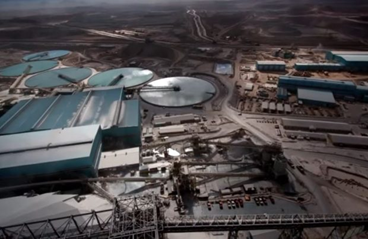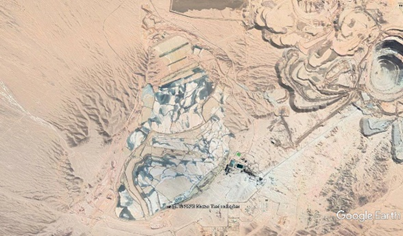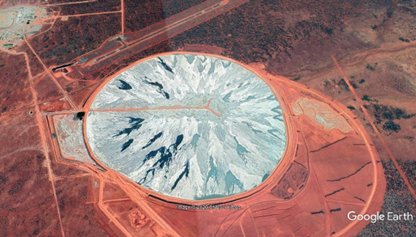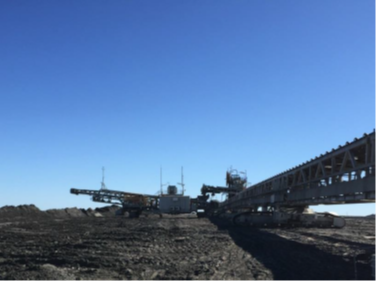
Strategies to reduce water consumption in Concentrator Plants (Part 1)
Jul 11, 2024
5 min read
Because water is a strategic, scarce and high-cost resource, miners are developing strategies in concentrator plants to reduce water consumption. In this article, we will discuss where the biggest water losses occur in the process and the strategies that can be adopted to reduce water consumption.
Water use in Mining
Water is an essential resource for the mining industry. The vast majority of it is used in dust suppression, slurry transport and ore processing. Ore processing in particular can use significant amount of water requiring typically 500 liters to process one ton of ore.
In 2014, the Columbia Centre on Sustainable Investment reported that 70% of projects of the six biggest global mining companies were located in water stressed countries such as Australia, South Africa, Chile and Peru. In these countries, the mining industry competes with other industries and local communities for the use of the resource. In some instances, water sourcing issues have resulted in temporary suspension of production, projects being delayed or put on hold and conflicts with the local communities. Some examples include the delays and impact to projects such as Southern Cooper Tia Maria and Minera Yanacocha Conga in Peru and Centerra Gold Mount Milligan in Canada (1).
Typical sources of water include surface water (streams, river, lakes), ground water and commercial water service suppliers.
The operational cost of fresh or continental water is very low, in the order of 0.3 to 0.5 USD/m3, because it usually comes from gravitational sources from high mountain ranges or wells close to the plants. Nevertheless, given water scarcity and environmental impact on glaciers, salt flats and groundwater, fresh water is being replaced for raw or desalinated seawater.
The cost of treated desalinated water at a reverse osmosis plant is around USD 1.0/m3 and will increase with the distance of the water source from the plant and the altitude. For example, the final cost of water for a concentrator located in the mountain range at an altitude between 2,000 and 4,000 m.a.s.l and 250 km from the coast, will be 3.0 to 5.0 USD/m3 per pumping stage.
Water scarcity and high cost highlights the need to minimize water consumption during processing while maximizing water recycling.
Concentrator plant water balance
Water losses are what ultimately drive water consumption since the consumed water (also known as makeup water) must be replaced to feed the process. In order to identify where water losses occur it is necessary to look at the plant’s water balance.
The diagram in figure 1 represents the water balance of a copper concentrator plant. In this set up, 99.5% of water consumption is due to losses that occur in the tailings dam. The water loss in the concentrator (the moisture in the product) accounts for only 0.5%. In iron ore concentrator plants, which have higher product mass yield than copper plants, the water consumption
increases to 15% at the concentrator and decreases to 85% at the tailings dam.
In both plants the water consumption in the tailings dam is high. Therefore, to optimize water consumption it is critical to understanding how these losses occurred at this stage of the process.
Water losses in Tailing Deposits
Tailing disposal methods include conventional tailings dams, paste or thickened tailings and filtered tailings. Water losses differ with the type of tailing disposal method used.
1. Water losses in conventional tailings dams
Conventional tailings consist of a dam or wall that closes a valley (figure 2). They are constructed of sterile ore or sands classified from the same tailings stream. Tailings with 36% to 60% solids are deposited in the tailings dam and about 20% to 30% of the water transported is recovered. Later, after settling, a clear water lagoon is formed, from this point the water is then re-cycled and fed to the process.
A common concentrator plant with capacity of 100 ktpd and a life of mine of 20 years, is expected to store 720 Mt of tailings (equivalent to 480 Mm3) containing a significant amount of water. In a conventional tailings dam 15%-20% of this water will be lost in evaporation of the water lagoon and in the wetted active beach, 10%-15% will be lost by infiltration and 65%-75% will be retained in the fine tailings, mainly in the slimes and ultra-thin material.
Fig 2. Conventional tailings dam
The average consumption of a tailings dam with 30% water recovery from the clear water lagoon is 0.60 m3/t. But a tailing deposit of this type can have water makeup as little as 0.35 m3/t in advantageous topographic conditions.
Considering that the biggest losses are in the retained water by fine particles (65%-75%), studies should be conducted to reduce the loss of water and increase the recirculation of recovered water to the plant.
2. Water losses in paste or thickened tailings
The paste or thickened tailings are unsegregated tailings that due to their high viscosity do not generate a wastewater release (figure 3). They receive tailings with 60% to 70% solids produced by high density, deep angle cone thickeners that operate with high yield stress (100 to 300 Pascals) and require high drive torque (6.0 to 10.0 MN-m).
Fig 3: Paste/Thickened tailings
The water consumption to replace water discharged by a pulp with 70% solids is 0.43 m3/t. Once in the tailings deposit, it is not possible to recover more water. However, in some plants that do not reach a sufficient percentage of solids or viscosity, the tailings generate a recoverable drainage of 5%-10% of the total water entering the deposit.
3. Water losses in filtered tailings
Filtered tailings are obtained using high-capacity filters, usually high-pressure filters, that are able to dry extremely fine particles such as ultra-fines or clays. Slurry coming from thickeners with 50%-60% solids is fed to filters. At the filters, solids moisture is reduced to 20%. As a result, the water consumption or make up decreases to 0.25 m3/t, making this tailing deposit method more efficient compared to other technologies.
Fig 4: Filtered tailings
Once the filtered tailings are generated, a system of belt conveyors and stackers are used to create a dry stacking system of several layers of 6m to 10m reaching heights of up to 100m.
Initially filtered tailings were used in small capacity plants but currently there are plants of up to 40,000 tpd using this type of technology.
The main disadvantages of this method is the high cost of the filtration equipment and the stacking difficulties for fine materials producing high moisture content.
Our next blog, “Strategies to reduce water consumption in concentrator plants (part 2)”, will discuss in detail the strategies that can be implemented to reduce concentrator plant water consumption.
1 Toledano, P. and Roorda, C., ‘Leveraging Mining-Related Water Infrastructure for Development,’ Columbia Center on Sustainable Investment, Columbia University, March 2014. http://ccsi.columbia.edu/les/2014/05/CCSI-PolicyPaper-Leveraging-Mining-Related-Water-Infrastructure-for-Development-March-2014.pdf; see also ‘Global Mining Industry: Water Scarcity to Raise Capex and Operating Costs, Heighten Operational Risks’.
For more information contact our technical team at sales@plapl.com.au or call us on +61 3 9786 1711.








